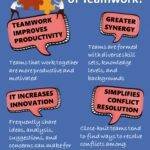
With Appreciative Interviews a group can generate the list of conditions that are essential for its success
Appreciative Interviews (AI) is a Liberating Structure that helps identify enablers for success in less than one hour. By starting from what goes well — instead of what doesn’t — AI liberates spontaneous momentum and insights for positive change as “hidden” success stories are uncovered.
It will spark true peer-to-peer learning, generate constructive energy and offers the participants valuable insights.
Stories from the field offer social proof of local solutions, promising prototypes, and spread innovations while providing data for recognizing success patterns. You can overcome the tendency of organizations to underinvest in social supports that generate success while overemphasizing financial support, time, and technical assistance.
Four Structural Elements
1. Structuring Invitation
- Ask, “Please tell a story about a time when you worked on a challenge with others and you are proud of what you accomplished. What is the story and what made the success possible? Pair up preferably with someone you don’t know well.”
2. How Space Is Arranged and Materials Needed
- Unlimited number of groups
- Chairs for people to sit in pairs face-to-face; no tables needed.
- Paper for participants to take notes
- Flip chart to record the stories and assets/conditions
3. How Participation Is Distributed
- Everyone is included
- Everyone has equal time and opportunity to contribute
4. Sequence of Steps and Time Allocation
- Describe the sequence of steps and specify a theme or what kind of story participants are expected to tell. 3 min.
- In pairs, participants take turns conducting an interview and telling a success story, paying attention to what made the success possible. 7–10 min. each; 15–20 min. total.
- In groups of 4, each person retells the story of his or her pair partner. Ask participants to listen for patterns in conditions/assets supporting success and to make note of them. 15 min. for groups of 4.
- Collect insights and patterns for the whole group to see on a flip chart. Summarize if needed. 10-15 min.
- Ask, “How are we investing in the assets and conditions that foster success?” and “What opportunities do you see to do more?” Use 1-2-4-All to discuss the questions. 10 min.
Purposes and Objectives
- Generate constructive energy by starting on a positive note.
- Capture and spread tacit knowledge about successful field experience.
- Reveal the path for achieving success for an entire group simultaneously
- By expecting positive behaviors, you can bring them forth (Pygmalion effect)
- Spark peer-to-peer learning, mutual respect, and community building.
- Give permission to explore complex or messy challenges
- Create a new exciting group narrative, e.g., “how we are making order out of chaos!”
Tips
- Before starting the interviews in pairs, give participants a couple of minutes to remember a success story from their past
- Minimise distractions so the participants can have focused interviews
- Encourage storytelling by starting with “Tell me a story about a time when…”
- Ask people to give a title to their partner’s story
- Make the stories and patterns visible to everyone
- Flip malaise and negative themes to “When is it that we have succeeded, even in a modest way?”
- Invite additional paired interviews before building up to patterns
- Invite participants to notice when they form a judgment (about what is right or wrong) or an idea about how they can help, then to “let it go”
Examples
- For revising college courses with “stories when a course or learning experience had a profound influence on your life”
- For repairing a relationship between a patient and a doctor with “stories when you were able to accept openly responsibility for making a medical error”
- For building trust and morale in an NGO with “stories when you experienced here in the office the esprit de corps of work in the field. What made that possible?”
- For looking beyond the launch of a transformation initiative with “stories of first successes in the field that can guide our strategy for the next two years”


